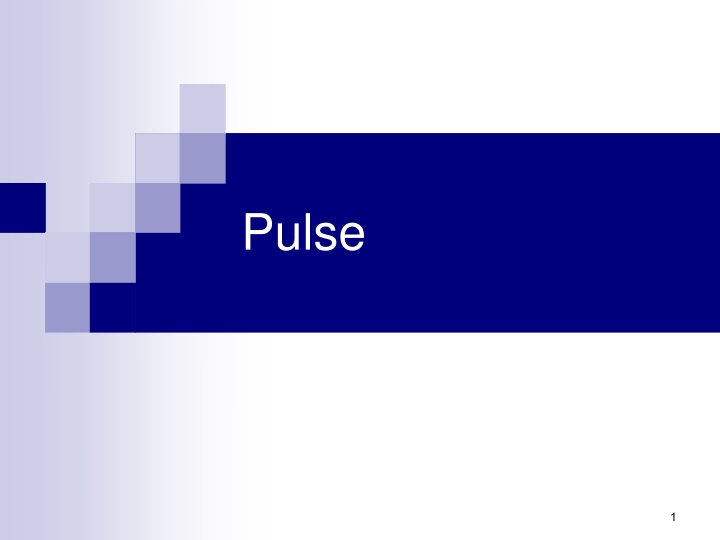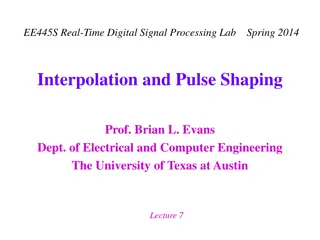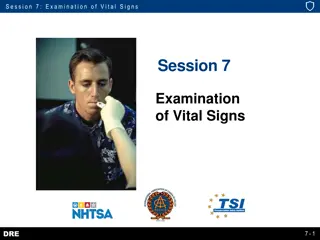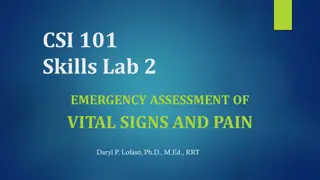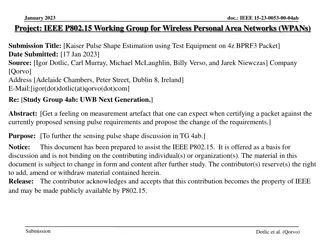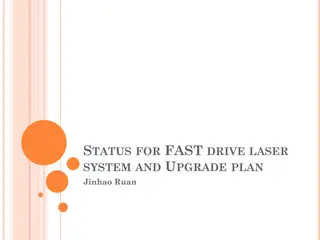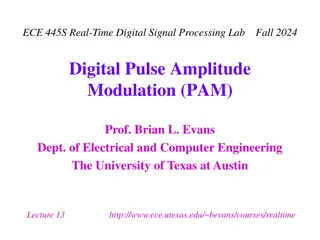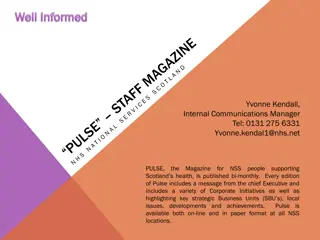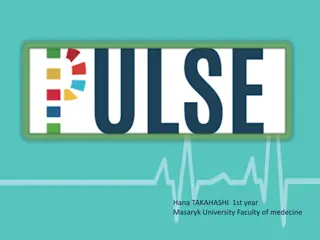Pulse
Pulse is a crucial indicator of cardiovascular health, representing the heart's efficiency in pumping blood. Factors influencing pulse include age, gender, exercise, fever, medications, hypovolemia, stress, and more. Different pulse sites like radial, carotid, apical, brachial, femoral, and others hold significance in assessing circulation. Learn how to assess pulse rate, rhythm, volume, elasticity, and pulse deficit for a comprehensive understanding of cardiovascular function.
Download Presentation

Please find below an Image/Link to download the presentation.
The content on the website is provided AS IS for your information and personal use only. It may not be sold, licensed, or shared on other websites without obtaining consent from the author.If you encounter any issues during the download, it is possible that the publisher has removed the file from their server.
You are allowed to download the files provided on this website for personal or commercial use, subject to the condition that they are used lawfully. All files are the property of their respective owners.
The content on the website is provided AS IS for your information and personal use only. It may not be sold, licensed, or shared on other websites without obtaining consent from the author.
E N D
Presentation Transcript
Pulse 1
Pulse Is a blood wave created by contraction of the left ventricle of the heart It represents the stroke volume output. Compliance : Ability of the arteries to contract and expand. Cardiac output: the volume of the blood pumped in the arteries = SV X HR. 2
Pulse PERIPHERAL PULSE APICAL PULSE 3
Factors affecting the pulse Age: with age Gender: after puberty male slightly < than female. Exercise: with exercise Fever: with fever Medications: e.g with epinephrine and with digitalis. Hypovolemia: with blood loss Stress: with stress Position changes: sitting or standing pooling of blood in dependent vessels BP & HR. Pathology 4
Pulse sites Readily accessible Radial When radial pulse is not accessible Temporal During cardiac arrest/shock in adults Determine circulation to the brain Carotid Infants and children up to 3 years of age Discrepancies with radial pulse Monitor some medications Apical 5
Pulse sites Brachial Blood pressure Cardiac arrest in infants Femoral Cardiac arrest/shock Circulation to a leg; Circulation to lower leg Circulation to the foot Circulation to the foot Popliteal Posterior tibial Dorsalis pedis 6
Assessing pulse Palpation (60 sec.) Middle three fingers Using stethoscope Doppler ultrasound Moderate pressure Aware of (medications, activity, position) 8
Assessing pulse Rate : tachycardia (>100B/m), bradycardia (< 60B/m) Rhythm : Equality of beats and intervals between beats. dysrhythmia, arrhythmia (ECG) Volume (strength or amplitude) : full or bounding, weak, feeble, thready (Normal: felt with moderate pressure). Elasticity: should be straight, smooth, soft, pliable Pulse deficit : any discrepancy b/w apical-radial pulses. 9
Assessing Apical pulse Explain procedure Privacy Supine, or sitting position Point of maximal impulse (PMI) 5th. Intercostal space MCL. Clean ear piece and diaphragm by antiseptic gel Warm diaphragm before use Assess for lub-dub
Nursing Diagnosis Ineffective Cerebral Tissue Perfusion related to cerebral ischemia 14
